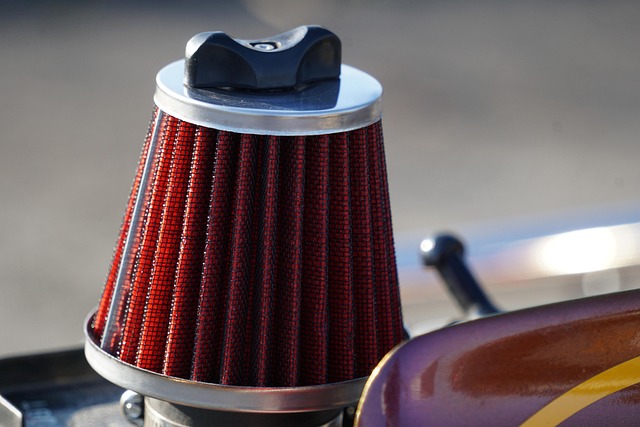How to Change a Car Air Filter: The Ultimate Step-by-Step Guide
Introduction: How to Change a Car Air Filter
A car’s air filter plays a vital role in maintaining engine performance and fuel efficiency. Over time, dirt, dust, and debris accumulate in the air filter, restricting airflow and reducing engine efficiency. If you’re wondering how to change a car air filter, you’re in the right place. This guide will take you through every step, ensuring that you can complete the task quickly and effectively.
Regular maintenance of your car’s air filter is essential for optimal engine performance. A dirty or clogged air filter can reduce fuel efficiency, increase emissions, and cause your engine to work harder than necessary. Fortunately, learning how to change a car air filter is a straightforward process that requires minimal tools and expertise.
Most manufacturers recommend replacing the air filter every 12,000 to 15,000 miles, but it’s always best to consult your owner’s manual for specific recommendations. If you frequently drive in dusty or polluted environments, you may need to replace it more often.
This article will provide a step-by-step guide on how to change a car air filter, along with answers to frequently asked questions, troubleshooting tips, and best practices for maintaining your vehicle’s engine health. Whether you’re a seasoned car owner or a beginner, this comprehensive guide will make the process simple and stress-free.
By the end of this guide, you will have all the knowledge and confidence needed to change your air filter efficiently. Let’s dive in and explore exactly how to change a car air filter and why this maintenance task is so crucial.
Why Changing Your Car Air Filter is Important
A clean air filter enhances engine efficiency, improves gas mileage, and reduces emissions. Here are some key benefits of changing your air filter regularly:
- Improved Fuel Efficiency: A clean air filter allows for better air intake, leading to more efficient combustion.
- Enhanced Engine Performance: Your engine will run smoothly without the restrictions caused by dirt and debris.
- Reduced Emissions: A clogged air filter can lead to incomplete fuel combustion, increasing pollution.
- Prolonged Engine Life: Regular air filter replacement prevents debris from entering the engine, reducing wear and tear.
Signs You Need to Change Your Car Air Filter
It’s essential to recognize when your air filter needs to be changed. Here are some common signs that indicate it’s time for a replacement:
- Reduced Fuel Efficiency: If you notice a sudden drop in your miles per gallon, your air filter might be clogged.
- Check Engine Light: A dirty air filter can trigger the check engine light due to restricted airflow.
- Black Smoke from the Exhaust: Insufficient air supply can cause an incomplete fuel burn, leading to black smoke.
- Unusual Engine Noises: A clogged filter can cause a rough idle or sputtering noises from the engine.
- Reduced Acceleration Power: If your car hesitates or struggles to accelerate, it may be due to a restricted air intake.
Tools and Materials Needed
Before you begin, gather the following tools and materials:
- A new air filter (Check your vehicle’s manual for the correct size and type)
- A screwdriver or wrench (if needed for your specific air filter housing)
- A clean cloth or rag to wipe away dust and debris
- Compressed air (optional) for extra cleaning
- A glove (optional) to keep your hands clean
Step-by-Step Guide: How to Change a Car Air Filter
Step 1: Locate the Air Filter Housing
The air filter is typically found in a black plastic box near the engine. In most cars, it is secured with metal clips, screws, or plastic fasteners.
Step 2: Open the Air Filter Housing
Use a screwdriver or simply unclip the fasteners to open the air filter housing. Lift the cover and set it aside.
Step 3: Remove the Old Air Filter
Carefully take out the old air filter and inspect it for dirt and debris. If it looks dark or clogged, it’s time for a replacement.
Step 4: Clean the Air Filter Housing
Before inserting the new filter, use a clean rag or compressed air to remove any dust or debris from the housing.
Step 5: Insert the New Air Filter
Place the new air filter into the housing, ensuring it fits snugly in place. The rubber edge should sit flush against the edges.
Step 6: Close the Air Filter Housing
Reattach the cover and secure it with clips or screws. Double-check that everything is properly sealed.
Step 7: Start Your Engine and Check Performance
Turn on your engine to ensure it runs smoothly. If you notice any issues, double-check the installation.
Frequently Asked Questions (FAQ)
How often should I change my car air filter?
Most manufacturers recommend changing your air filter every 12,000 to 15,000 miles, but it depends on your driving conditions.
Can I clean and reuse my air filter?
Some air filters, like reusable performance filters, can be cleaned and reused. However, standard paper filters should be replaced.
How much does it cost to replace a car air filter?
A replacement air filter typically costs between $10 and $40, depending on the brand and type.
Can a dirty air filter affect my car’s performance?
Yes, a clogged air filter can reduce engine efficiency, lower fuel economy, and increase emissions.
Is changing a car air filter a DIY task?
Yes! Changing a car air filter is a simple task that most car owners can do in under 10 minutes.
Final Thoughts: How to Change a Car Air Filter
Learning how to change a car air filter is a valuable skill that can save you money on maintenance costs while ensuring your engine operates at peak efficiency. Regularly changing your air filter improves fuel economy, extends engine life, and reduces harmful emissions.
By following this step-by-step guide, you now have the confidence to replace your car’s air filter whenever necessary. It’s a straightforward process that requires minimal effort and tools, making it an ideal DIY task for any vehicle owner.
Whether you’re driving in the city or on dusty country roads, keeping a clean air filter is essential for optimal engine performance. The next time you notice reduced fuel efficiency or sluggish acceleration, remember to check and replace your air filter.
Changing your car air filter regularly will keep your vehicle running smoothly and efficiently. Now that you know exactly how to change a car air filter, you can take control of your car’s maintenance and keep your engine in top shape.
Additional Resources





